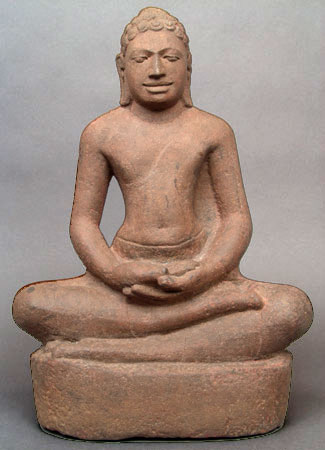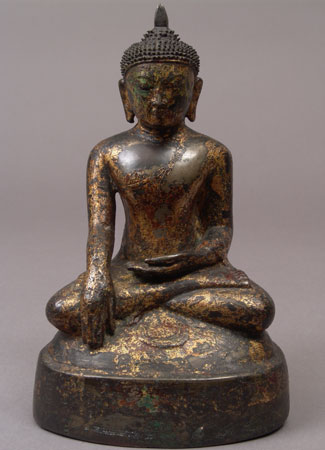Burmese Buddhism and its Protectors
|
Burmese Buddhism is a combination of indigenous beliefs and customs and Theravada Buddhist concepts and practices. The Buddha sought to teach people the moral and spiritual path to enlightenment. At his own enlightenment, the Buddha became knowledgeable of the cycles of rebirth (reincarnation), karma, and the Four Holy Truths. Karma is defined as the principle that individuals are reborn well or poorly depending on their actions in previous lives. For example, hatred and violence lead to hell, whereas kindness and generosity lead to happy lives in human or god-like forms. Minor actions can have effects on appearance, levels of wealth, and health, among others. All intentional actions contribute to the sum of an individual’s karma. A more advanced approach to Buddhist thought can be found in the Four Holy Truths, which state that a) all individuals are subject to suffering, b) the cause of this suffering is craving, c) the attainment of nirvana will end this suffering, and d) the path to nirvana is via the Eight-fold Path or Middle Way which focuses upon correct behavior and thoughts.
|
Not all individuals are able to understand and practice the Buddha’s teachings upon first hearing them, and various methods are used to assist these beings to come to a higher understanding of Buddhist concepts. One method is the production and honoring of Buddha images, stupas, and religious art, which can function both as reminders of the most recent Buddha and his ideas, and as reliquaries. As Buddhism diffused from India to other countries, religious art was altered to suit local expression. For example, the Buddhas on display here show the Burmese interpretation of canonical descriptions, as well as revealing peculiarly Burmese features, such as extensive ribbons and crowns.
Unorthodox ideas were also incorporated into Burmese Buddhist art. The Dekhina Thakha, for example, is a non-canonical image that functions as a protector and is used as a Buddha image on private altars at home. Shin Thivali, a monk, has also come to symbolize protection, in addition to his position as a spiritually advanced being.
Many other elements of Burmese art also play a protective role. Nagas (serpents/dragons), devas (gods), bilu (ogres), lokanat (guardians of the directions and harmony), and kinnari (creatures who are half-human and half-bird) are liberally depicted in Burmese art to ward off evil and to provide a cosmological balance to the world. Bilu are usually placed at the entrance to area; lokanat at the entrance to a building or close to the king’s throne. Kinnari and Kinnara are located on doors, on wall paintings or roofs of monasteries, on wall paintings, and at the corners of buildings. Devas and nagas can be seen within religious buildings. The devas are connected with the heavens, while the nagas are associated with water and territory or soil.
Unorthodox ideas were also incorporated into Burmese Buddhist art. The Dekhina Thakha, for example, is a non-canonical image that functions as a protector and is used as a Buddha image on private altars at home. Shin Thivali, a monk, has also come to symbolize protection, in addition to his position as a spiritually advanced being.
Many other elements of Burmese art also play a protective role. Nagas (serpents/dragons), devas (gods), bilu (ogres), lokanat (guardians of the directions and harmony), and kinnari (creatures who are half-human and half-bird) are liberally depicted in Burmese art to ward off evil and to provide a cosmological balance to the world. Bilu are usually placed at the entrance to area; lokanat at the entrance to a building or close to the king’s throne. Kinnari and Kinnara are located on doors, on wall paintings or roofs of monasteries, on wall paintings, and at the corners of buildings. Devas and nagas can be seen within religious buildings. The devas are connected with the heavens, while the nagas are associated with water and territory or soil.





















